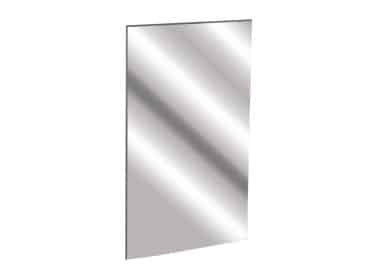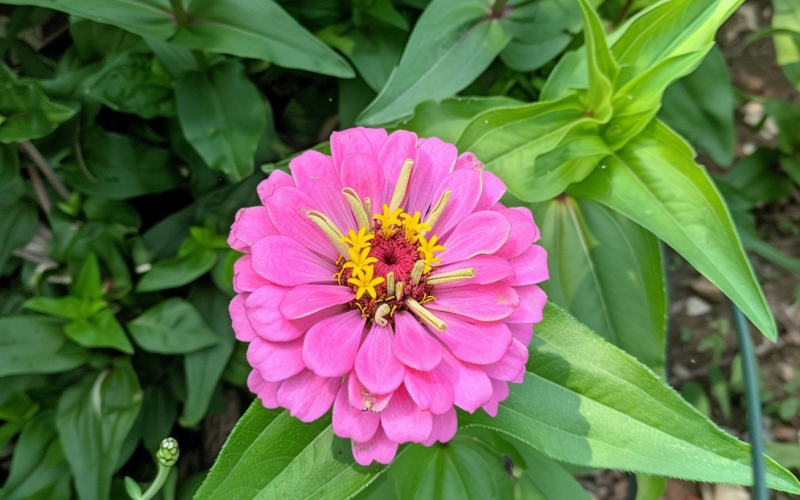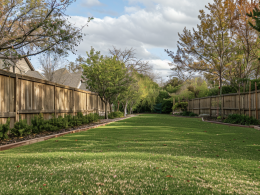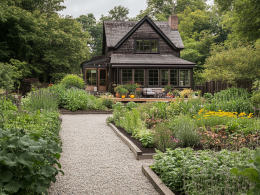Zinnias are a fantastic choice for adding vibrant, carefree color to your summer garden. These easy-to-grow annual flowers bloom abundantly with a wide range of bold, eye-catching hues.
Whether you’re a seasoned gardener or just starting, this step-by-step guide will show you everything you need to know to successfully plant and care for zinnias.
From picking the right spot to dealing with common pests and diseases, I’ll walk you through the process so you can enjoy these cheerful blooms all season long.
Let’s get your zinnia garden started!
How to Grow Beautiful Zinnias

Zinnias are known for being fast-growing and producing abundant flowers throughout the summer and into fall.
Their bold, daisy-like blooms create a stunning display in gardens, borders, and container plantings.
With their low-maintenance requirements and long-lasting flowers, it’s no wonder zinnias are a summertime garden staple.
The key to getting the most out of your zinnia plants is understanding their needs regarding planting and ongoing care.
Providing them with the right growing conditions is essential for producing the vibrant, carefree blooms that zinnias are loved for.
Choosing the Right Location
When it comes to growing successful zinnias, choosing the right location is key.
- Sunlight Requirements: These flowers thrive in full sun and require at least six hours of direct sunlight daily. Anything less, and your zinnias may struggle to bloom to their full potential.
- Soil Conditions: Zinnias prefer nutrient-rich, well-draining soil. Heavy, clay-based soils that hold too much moisture can lead to issues like root rot, so it’s important to amend the planting area with compost or other organic matter to improve drainage. A slightly acidic to neutral soil pH is ideal, but zinnias are fairly adaptable and tolerate various soil conditions.
Different Types of Zinnias to Choose From
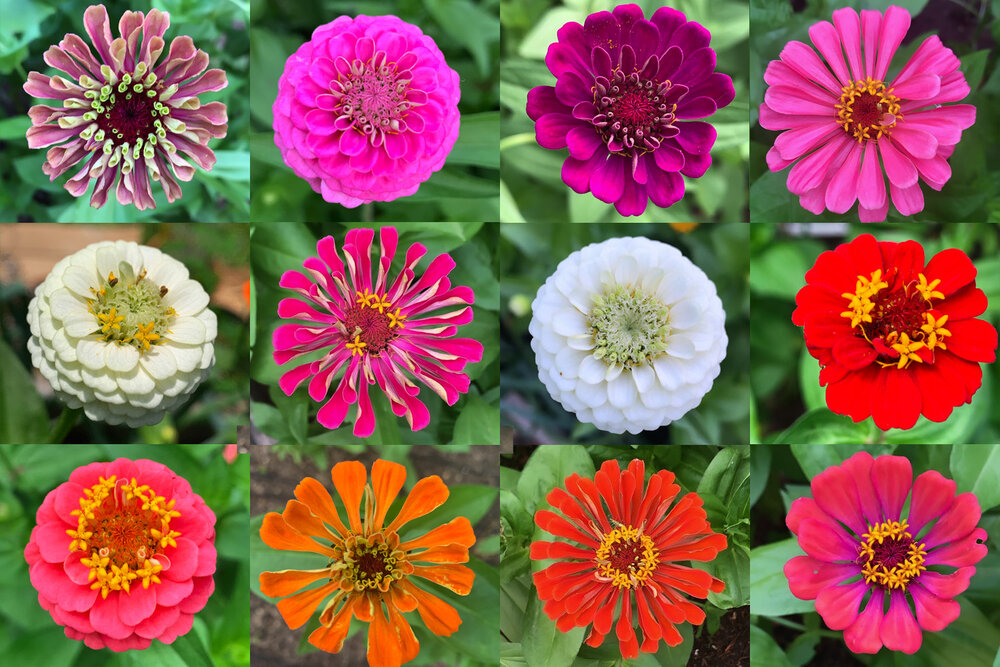
Zinnias come in various shapes, sizes, and colors, giving gardeners plenty of options. Here are some of the most popular zinnia varieties to consider:
- Thumbelina: These compact, multi-branching plants grow 12 to 18 inches tall and produce semi-double to double blooms around 2 inches wide in shades of pink, salmon, lavender, purple, pumpkin, crimson, and yellow.
- State Fair: Boasting large, dahlia-like flowers 3 to 5 inches across, the ‘State Fair’ variety features double and semi-double blooms in red, purple, salmon, yellow, white, and lavender. The tall stems make them great for cutting.
- Dreamland: This dwarf variety offers double flower heads on a compact, bushy plant.
- Envy: Unique chartreuse, semi-double flowers up to 30 inches tall give this variety a striking, eye-catching look.
- Orange Star: A bushy dwarf plant with bright orange blooms.
Choosing the Right Variety for Your Garden
- When choosing a zinnia variety for your garden, consider the overall size and growth habit you prefer and the specific flower colors that will complement your landscape.
- Taller varieties like ‘State Fair’ are lovely for cutting, while the compact ‘Thumbelina’ and ‘Orange Star’ work well in containers or small spaces.
How to Plant Zinnias
When starting your zinnia garden, you have a couple of options: You can either sow the seeds directly into your garden or start them indoors and transplant the seedlings outside.
Direct Sowing
- If you plant the zinnia seeds directly in the garden, start by selecting a sunny spot with at least 6 hours of direct sunlight daily.
- Prepare the soil by mixing in some compost or other organic matter to enrich it.
- Then, sow the seeds about 1/4 inch deep into the soil.
- Be sure to space them out according to the seed packet instructions.
- Keep the soil moist until the seeds germinate, which usually takes a few days.
Transplanting Seedlings
- You can start the zinnias indoors 4-6 weeks before your last expected frost date.
- Sow the seeds in seed trays or small pots, keeping them consistently moist.
- Once the seedlings have their first set of true leaves, you can transplant them into the garden.
- Choose a sunny spot, dig a hole slightly larger than the root ball, and gently place the seedling in, taking care not to damage the roots.
- Water well after transplanting.
How to Care Zinnias
Once your zinnia plants are established, they require minimal ongoing care to keep them looking their best. Let’s go over the key aspects of caring for zinnias:
- Watering: Zinnias are fairly drought-tolerant and don’t need frequent watering. However, giving them a good drink every so often, especially during hot, dry spells, will help them thrive. Aim to water when the top inch of soil feels dry to the touch. Be sure the soil drains well to prevent issues like root rot.
- Fertilizing: These flowers don’t need much extra nourishment. A light application of a balanced, all-purpose fertilizer every 4-6 weeks during the growing season is usually sufficient. Be careful not to over-fertilize, as this can reduce bloom production.
- Pruning: To encourage continuous flowering, you can deadhead spent blooms by snipping them off at the stem. This signals the plant to put its energy into producing more flowers rather than seeds. Beyond this, zinnias don’t require much pruning.
- Temperature and Humidity: Zinnias thrive in hot, sunny weather. They can easily handle high temperatures and even tolerate quite a bit of humidity. As long as they get plenty of sunlight, these resilient flowers will keep blooming even in the dog days of summer.
Common Pests and Diseases Issues
While zinnias are generally quite resilient, they occasionally face common pest and disease issues. Identifying and addressing these problems quickly is key to maintaining healthy, thriving plants.
- Identifying Issues Some of the most common problems with zinnias include leaf spots, root rot, blight, and powdery mildew. Leaf spots often appear as brown or black spots on the foliage, while root rot causes the roots to decay and the plant to wilt. Powdery mildew is a white, powdery coating on the leaves and stems.
- Treatment Options Luckily, there are effective ways to treat these problems. For fungal issues like powdery mildew, you can apply a fungicide containing neem oil, potassium bicarbonate, copper, or sulfur. Cutting back any affected plant parts can also help. Insecticidal soap or neem oil sprays can help control pests like aphids or mites.
How to Encourage More Blooms
If you want to get the most out of your zinnia plants and enjoy an abundance of vibrant blooms, there are a few key things you can do:
- Maximizing Sunlight: First and foremost, ensure your zinnias get plenty of direct sunlight—at least 6 hours per day. These flowers won’t thrive in shady conditions, so choose a sunny spot for planting.
- Starting from Seeds: Another tip is to start your zinnias from seeds rather than buying seedlings. Plants grown from seed often produce more flowers than those transplanted from nurseries or greenhouses. The direct-sown zinnias tend to be heartier and more prolific bloomers.
- Pinching and Deadheading: Once young zinnia plants reach about a foot tall, pinch back the main growth to encourage branching and more flower production. This will promote bushier growth and more side shoots. You can also deadhead spent blooms throughout the summer to keep your zinnias flowering continuously. Snip off the old flowers, and the plant will redirect its energy into generating new ones.
Conclusion
Zinnias are the perfect choice for gardeners looking to add a vibrant pop of color to their landscape.
These easy-to-grow annuals thrive with minimal effort, making them a great option for beginners and seasoned green thumbs alike.
By following the planting and care tips outlined in this guide, you’ll be well on your way to enjoying a stunning zinnia display all season long.
From selecting the ideal location to dealing with common pests and diseases, I’ve covered everything you need to know to help your zinnias reach their full potential.
So what are you waiting for? Get out there and start planting some zinnias!
Happy growing!




